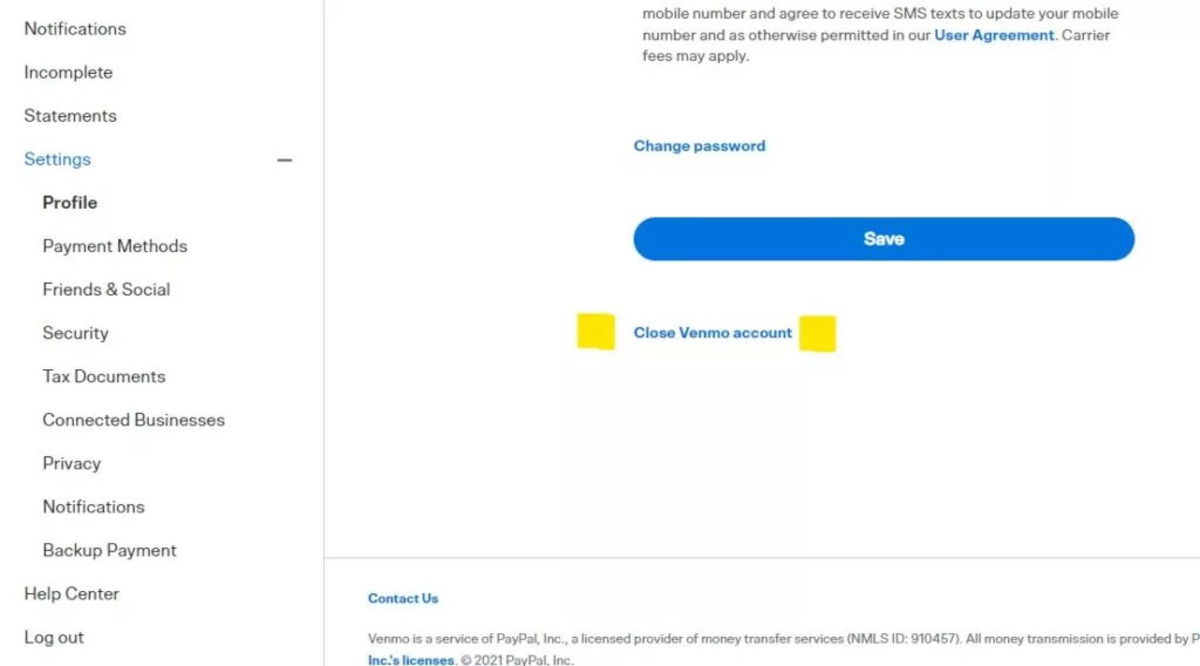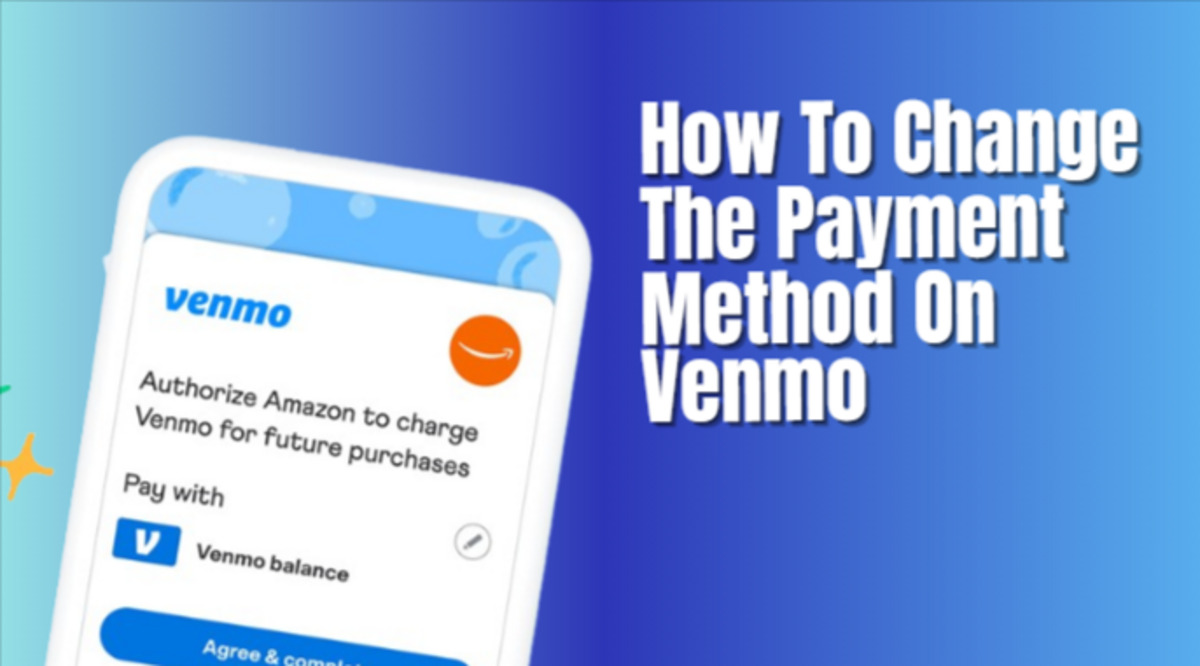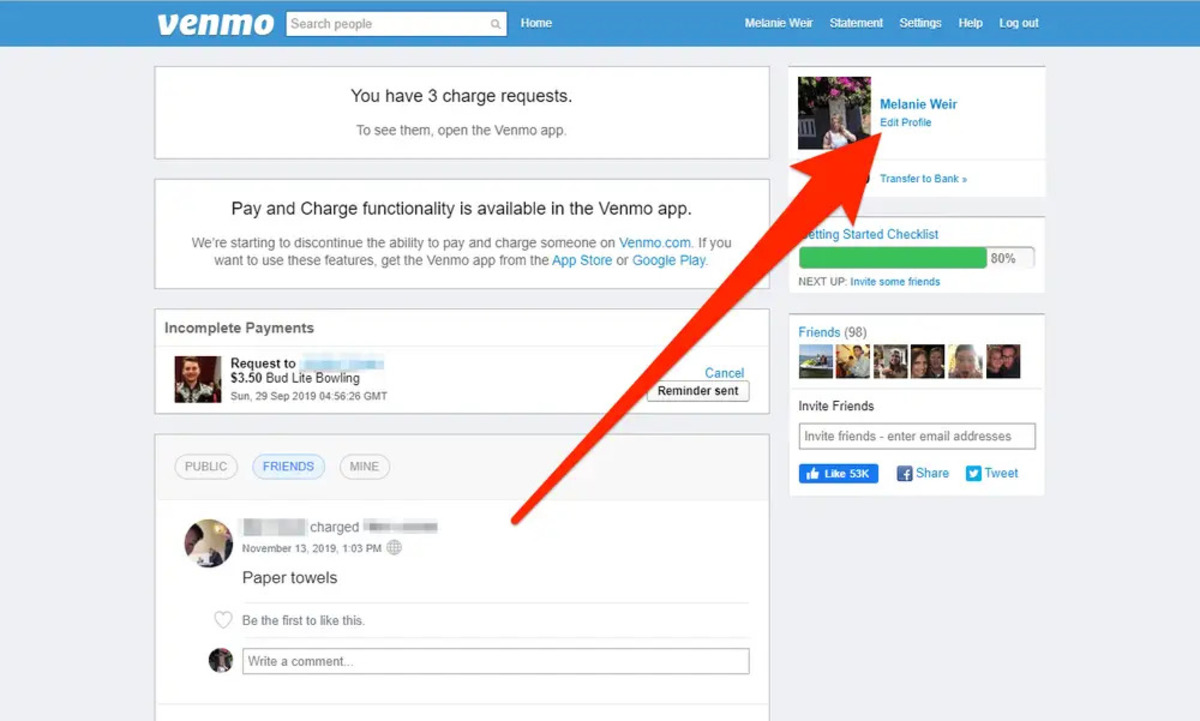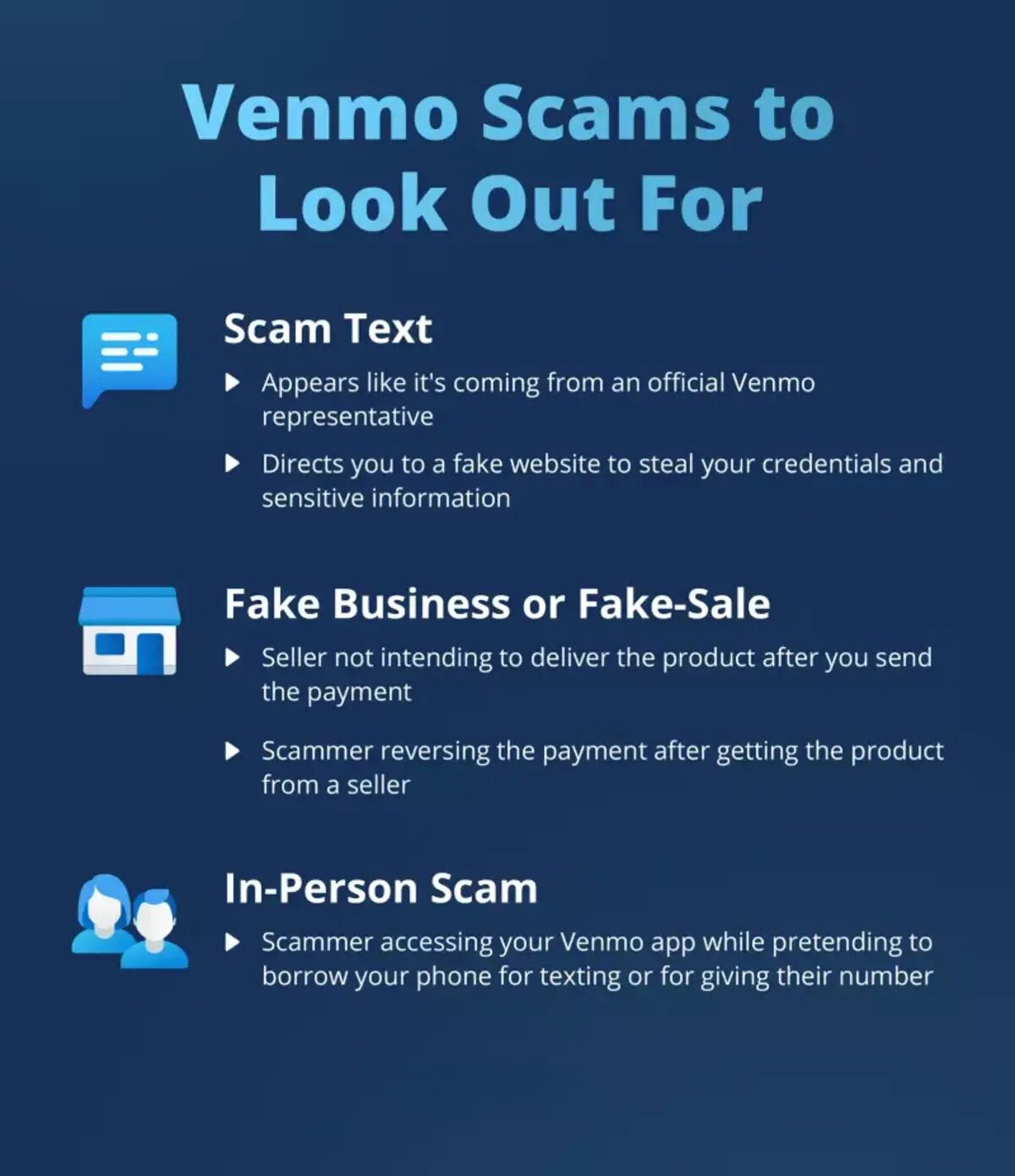Introduction
Venmo is a popular mobile payment service that allows you to easily send and receive money from friends and family. With its convenience and user-friendly interface, Venmo has gained widespread popularity among users. However, there may come a time when you decide that deleting your Venmo account is the best course of action. Whether you want to switch to a different payment platform or simply want to take a break from using Venmo, knowing how to delete your account is essential.
In this article, we will guide you through the process of deleting your Venmo account and provide you with important information to consider before taking this step. We will also answer some frequently asked questions relating to account deletion and offer guidance on what steps to take after you have deleted your Venmo account.
While deleting your Venmo account is a straightforward process, it’s important to be aware that this action is permanent. Once you delete your account, you will lose all transaction history, contacts, and associated data. Therefore, it is crucial to take the necessary precautions and ensure that you have all the information you need before proceeding with the deletion process.
Whether you have decided to switch to a different payment platform, have privacy concerns, or simply want to take a break from using Venmo, this guide will walk you through the steps of deleting your account and provide you with valuable insights to help you make an informed decision.
Reasons to Delete Your Venmo Account
While Venmo offers a convenient way to send and receive money, there may be several reasons why you might want to delete your Venmo account:
- Privacy Concerns: Some users may have concerns about the privacy of their financial transactions on Venmo. If you have reservations about sharing your payment history and personal information with a third-party service, deleting your Venmo account can provide peace of mind.
- Security Risks: Although Venmo implements security measures to protect your account, no system is completely immune to hacking or data breaches. If you have concerns about the security of your financial information, deleting your account can eliminate the risk of unauthorized access.
- Switching to a Different Payment Platform: If you have decided to try out a different mobile payment service that better suits your needs, deleting your Venmo account is a necessary step. It allows you to transition smoothly without leaving behind any lingering account details.
- Reducing Digital Footprint: In an era where online privacy is becoming increasingly important, some individuals may choose to minimize their digital footprint by deleting unnecessary accounts. If you no longer use Venmo frequently or find it redundant, deleting your account can help streamline your online presence.
- Financial Management: Deleting your Venmo account might be a part of a broader financial management plan. If you are consolidating your financial accounts and prefer to use a different payment method or banking service, removing Venmo from the equation can simplify your financial management.
It’s important to note that these reasons are subjective and depend on individual preferences and circumstances. Prioritize what matters most to you when considering whether to delete your Venmo account.
How to Prepare Before Deleting Your Venmo Account
Before you proceed with deleting your Venmo account, there are a few important steps you should take to ensure a smooth transition and safeguard any necessary information:
- Download Transaction History: Venmo allows you to download your transaction history for record-keeping purposes. It’s a good idea to download and save this information before deleting your account. To do this, go to the “Settings” tab in the Venmo app, select “Privacy,” and then tap on “Download My Data” to receive a copy of your transaction history via email.
- Transfer Remaining Balance: If you have any remaining balance in your Venmo account, make sure to transfer it to your bank account before deleting your account. Open the Venmo app and navigate to the “Settings” tab, select “Transfer to Bank,” and follow the prompts to initiate the transfer.
- Update Payment Methods: If you have any recurring payments or subscriptions linked to your Venmo account, make sure to update the payment method for these services before deleting your Venmo account. This will ensure that your payments continue uninterrupted and you avoid any potential issues.
- Inform Contacts: If you frequently use Venmo to send and receive money from friends or family, it’s a good idea to inform them about your decision to delete your account. This way, they can make alternative arrangements for future transactions.
- Explore Alternatives: Research and explore alternative mobile payment services or banking apps that suit your needs. Look for options that prioritize the features and functionalities that matter most to you to ensure a seamless transition.
Taking these preparatory steps will help minimize any potential inconveniences and ensure that you have all the necessary information and funds transferred before deleting your Venmo account. By being proactive and organized, you can confidently move forward with the account deletion process.
How to Delete Your Venmo Account
If you have made the decision to delete your Venmo account, follow these steps to complete the process:
- Open the Venmo App: Launch the Venmo app on your mobile device. Ensure that you are logged in to the account you want to delete.
- Access Account Settings: Tap on the three lines in the top-left corner of the app to open the menu. Scroll down and select “Settings.”
- Select “Privacy & Security”: In the settings menu, select “Privacy & Security” to access the account deletion options.
- Choose “Delete Account”: Scroll down and tap on “Delete Account.” Venmo will display a warning message detailing the consequences of deleting your account. Read through the information carefully to ensure you understand the implications.
- Confirm Deletion: After reading the warning message, tap on “Delete My Account” to confirm the account deletion. Venmo will prompt you to verify your action by entering your password.
- Follow the Additional Steps: In some cases, Venmo may ask you to verify your identity or complete additional steps to finalize the account deletion process. Follow the instructions provided by Venmo to complete these steps, if applicable.
- Confirmation Email: After successfully deleting your account, you will receive a confirmation email from Venmo. Keep this email for your records as proof that your account has been deleted.
It’s important to note that once you have deleted your Venmo account, the action cannot be undone. Make sure to double-check all the information and consider the consequences before proceeding with the deletion process.
If you encounter any issues or need further assistance, you can reach out to Venmo’s customer support for guidance. They will be able to provide the necessary help to ensure a smooth account deletion process.
Steps to Take After Deleting Your Venmo Account
Once you have successfully deleted your Venmo account, there are a few important steps you should take to ensure a smooth transition and maintain your financial management:
- Monitor Any Linked Services: If you had any other financial or service accounts linked to your Venmo account, such as banking apps or subscriptions, make sure to review and update any payment or account information associated with those services.
- Set Up Alternative Payment Methods: Ensure that you have alternative payment methods set up, such as another mobile payment service or a physical debit or credit card, to continue making seamless transactions.
- Keep Transaction Records: If you need to maintain records of your financial transactions, make sure to establish a suitable system outside of Venmo. This can involve using personal finance apps, spreadsheets, or online banking tools to track your expenses and transactions.
- Inform Friends and Family: If you regularly use Venmo to send or receive money from friends and family, inform them about your account deletion. Let them know alternative methods they can use to transfer funds or make payments to you.
- Review Privacy Settings on Other Platforms: Take the opportunity to review privacy settings on other platforms and social media accounts where your Venmo activity may have been visible. Adjust your settings accordingly to maintain the desired level of privacy.
- Explore Other Payment Options: Consider exploring other mobile payment services or digital wallets to find a suitable alternative to Venmo. Research and compare features, security measures, and user reviews to find the platform that best meets your needs.
By taking these steps, you can ensure a smooth transition after deleting your Venmo account and continue managing your financial transactions effectively. Remember, each individual’s circumstances may vary, so adapt these steps to suit your specific needs and preferences.
Frequently Asked Questions about Deleting Venmo Account
Here are some commonly asked questions about deleting a Venmo account:
- Can I reactivate my deleted Venmo account?
- What happens to my transaction history after deleting my account?
- Will deleting my Venmo account affect my bank account?
- What happens to my pending transactions and payments after deleting my account?
- Can I delete my Venmo account through the website?
- What happens to my Venmo profile after deleting my account?
No, once you delete your Venmo account, it cannot be reactivated. The action is permanent, and you will need to create a new account if you wish to use Venmo again.
When you delete your Venmo account, your transaction history and associated data will be permanently deleted. It’s important to download and save your transaction history before deleting your account if you wish to retain any records.
No, deleting your Venmo account will not have any direct impact on your linked bank account. However, it’s important to transfer any remaining balance from your Venmo account to your bank account before deleting it.
If you have any pending transactions or payments on Venmo at the time of account deletion, they will be canceled. It’s essential to inform the recipient and make alternative arrangements for completing the transaction.
No, the option to delete your Venmo account is only available through the Venmo mobile app. You will need to access your account settings within the app to initiate the deletion process.
Your Venmo profile will be permanently deleted along with your account. This includes your profile picture, username, transaction history, and any other information associated with your account.
If you have any specific concerns or questions regarding the deletion process or your Venmo account, it is recommended to reach out to Venmo’s customer support for further assistance.
Conclusion
Deleting your Venmo account is a personal decision that may arise due to privacy concerns, security risks, or the need to switch to a different payment platform. By following the proper steps and taking necessary precautions, you can successfully remove your account while minimizing any potential disruptions.
Before deleting your Venmo account, it’s important to download your transaction history, transfer any remaining balance, and inform your contacts of your decision. Additionally, ensure that you have alternative payment methods set up and a system in place to track your financial transactions.
While Venmo offers a convenience for easy money transfers, it’s crucial to prioritize your privacy and financial management goals. Explore other payment options and weigh their features, security measures, and user reviews to find the best fit for your needs.
Remember, deleting your Venmo account is irreversible. Carefully consider your reasons for deletion and take the necessary steps to prepare and inform others before proceeding. If you have any specific concerns or questions, reach out to Venmo’s customer support for guidance.
By being proactive and well-informed, you can confidently delete your Venmo account and embark on a new financial journey with peace of mind and control over your personal information.

























